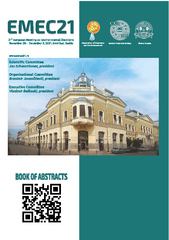| dc.description.abstract | The iodine value (iodine number) is characteristic for the content of unsaturated fatty acids in fats, fixed oils, emulsifiers and solubilizers. The determination of the iodine value is of significance for pharmaceutics, food chemistry and cosmetics. Standard methods for the iodine value determination approved by the Association of Official Analytical Collaboration (AOAC) International, the American Oil Chemists’ Society (AOCS), the International Organization for Standardization (ISO) and the European Pharmacopoeia (Eur. Ph.) [1-3] use hazardous solvents for fat samples such as cyclohexane/ glacial acetic acid mixture or chloroform, whereas glacial acetic acid is unique solvent for iodine monochloride or iodine monobromide that serves as iodination agent. Certain earlier proposals for more environmental friendly and faster iodine value determination considered utilization of 1,3-dibromo-5,5-dimethylhydantoin and potassium iodide instead of iodine monobromide, however also in glacial acetic acid as a solvent [4,5]. Recently, combining data from American and ISO standards, the Metrohm (2019) [6] proposed utilization of glacial acetic acid as a solvent for the fat sample and addition of magnesium acetate as catalyst to significantly reduce the reaction time, from 1 h to 5 minutes. In the current study we report certain novelties, which may contribute to development of less hazardous and environmental friendly method for the iodine value determination. Our method considers utilization of ethyl acetate as a solvent for the sample instead of cyclohexane/glacial acetic acid mixture or chloroform, whereas iodine monochloride in glacial acetic acid has been replaced by water solution of iodine monochloride (stabilized by small amount of hydrochloric acid). In the presence of ethyl acetate, starch solution does not yield the characteristic blue colour with iodine. Nevertheless, the titration end point can be recognized clearly and precisely without indicator. The method was tested on the following samples: coconut oil, olive oil, sunflower oil and linseed oil, covering a wide range of the iodine value from ~8 to ~180. Comparison of the average iodine values for studied samples obtained by the proposed and standard AOAC method indicates standard deviation less than 0.60, whereas repeatability limit for the proposed method is bellow 1.7 that is in line with statistical results for the precision of the Wijs method reported in ISO 3961 (2018) standard [2]. | sr |


